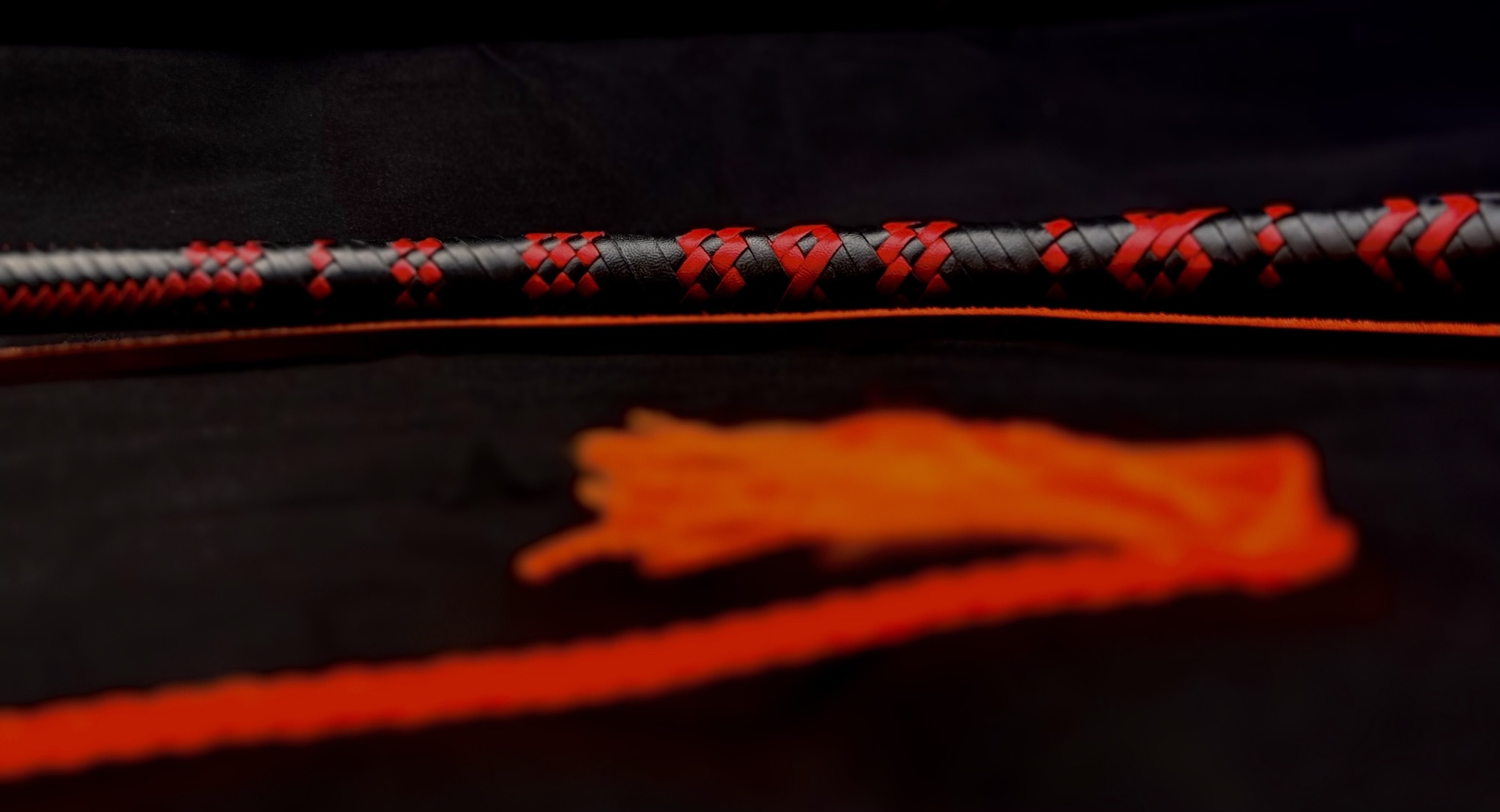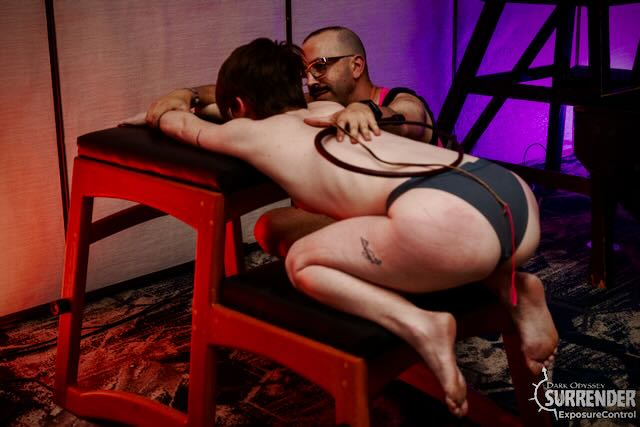
Instructors Alex and Zee (fet: CallMe_Z, email contact@call-me-z.com)
Full Cracking the Code Deck
Whip masters
- Master Robert - Fet: Robert9119
- Dex - Fet: Dex Youtube: @DexNeptune
Glossary
- Plaiting - The braiding done on the body or thong of a whip/quirt
- Fall - the soft, flexible tail or tails of a flogger, quirt, whip, etc.
- Cracker - Crackers or poppers are what actually make contact with your target.
- Belly (1) - Part of the internal structure of a whip; some whips can have multiple bellies.
- Belly (2) - The inner curve of a whip
- Spine - The other curve of the whip
How to Be a Whip Evangelist
Whip plays can be extremely nuanced, but that nuance comes with skill. Instead of asking “Where can’t I whip?” ask “Am I skilled enough to strike that area?”
Don’t scare folks away!
- Do the scene your partner has capacity for
- Negotiate your intensity ceiling and stay below it
- Impact is sensation; it doesn’t have to be brutal
- You can do a gentle whip scene
- Ask yourself, “Am I the right top for this person?
Teach others how to vet a whip thrower (including you!)
- Watch them throw on someone else
- Ask for partners or references
- Can they whip something fragile like a tissue without ripping it?
- What size area can they keep their strikes in?
- How well can they modulate intensity?
- How much will they be willing to explain the scene to you?
Building a scene requires negotiation.
- How do you and your partner want the scene to make you feel?
- What experience are you trying to deliver?
- Where are you allowed to strike?
- Where are you allowed to touch nicely?
How to transition your scenes into whips
- Warm-up is not just for the bottom
- Consider how the patterns and predictability you introduce early in the scene extend down the line.
- Can you use those patterns to create surprises later?
- Generally speaking, we’re moving from broader strike tools (floggers) to more focused strike tools (whips)
Connecting with your partner
- As the toys get longer, how are you bridging the gap between the two of you?
- How else can you use the toys in your hand as sensation or connection tools?
Don’t forget to check in with your partner in the scene, that might be a look from afar, or getting in close while they process a more intese hit.

Movement and dynamic scening
With practice and understanding, the same solid and stable foundation we learn to throw with can be taken on the go!
- Focus on decoupling the actions with your throwing arm from the movement of your body.
- Let your throw become muscle memory
- Moving shouldn’t change your throw, don’t move or lean into your throw
- Move slowly and methodically as you focus on your throw
- Measure the distance to your partner, and keep in mind how that distance changes as you move around them
- Imagine a circle or arc on the ground extending from where you measured
- Follow that circle as you move
- What purpose does your movement serve?
- Hitting a new area?
- Adjusting your swing?
- Keeping a rhythm?